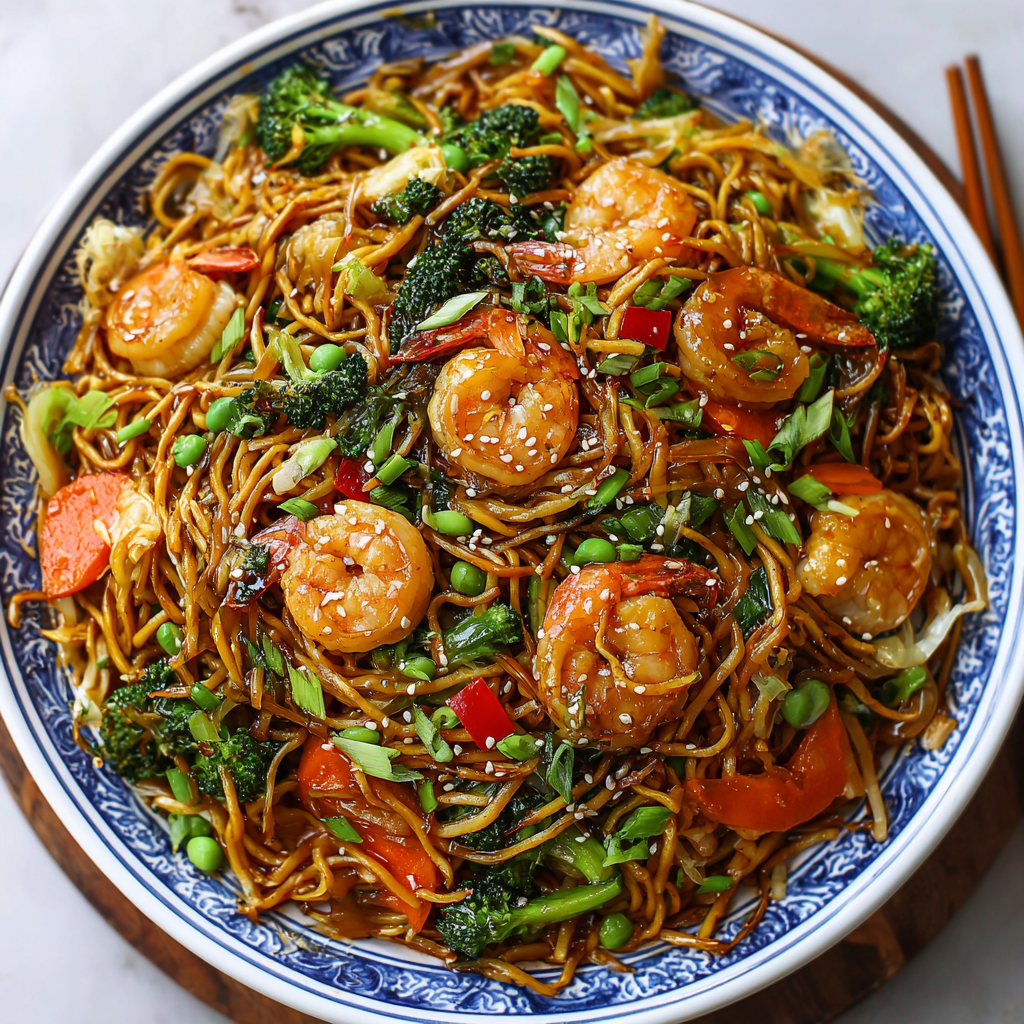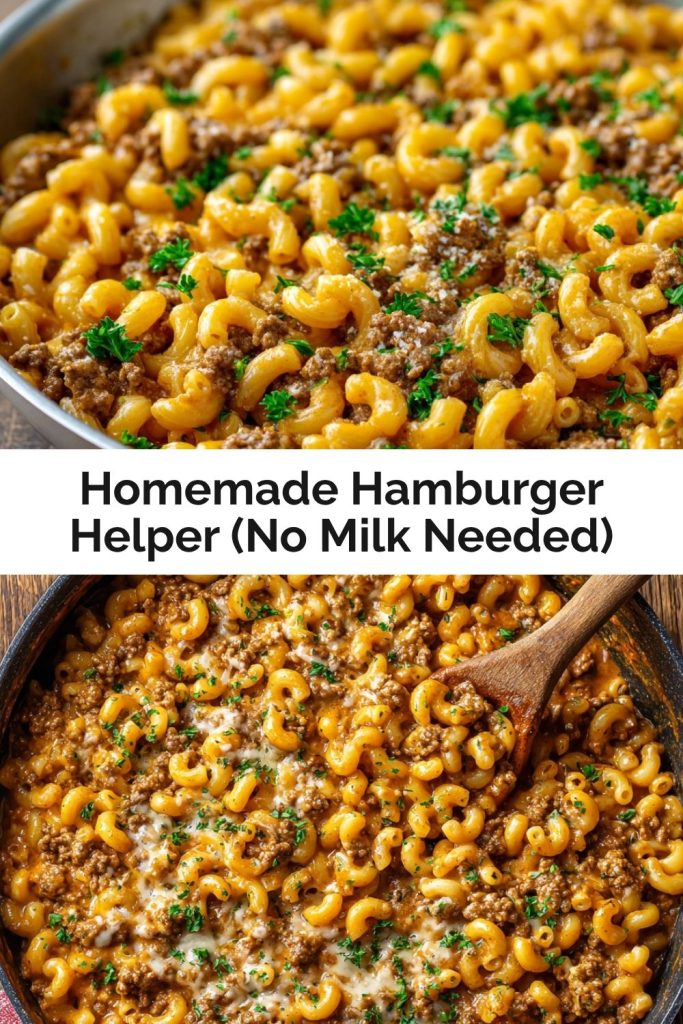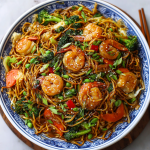***
Stir-Fried Chow Mein Noodles: Your New Weeknight Superpower
Hey there, friend! Let’s talk about one of life’s greatest kitchen miracles: the humble, the glorious, the downright irresistible stir-fry. You know the feeling. It’s 6 PM, your stomach is starting to stage a protest, and the thought of a complicated, multi-pot meal feels… well, impossible. That’s exactly when a recipe like this one swoops in to save the day.
Today, we’re making my absolute go-to Stir-Fried Chow Mein Noodles. This isn’t just a recipe; it’s a fast-track ticket to a dinner that’s bursting with more flavor, color, and sheer joy than you’d think possible in under 30 minutes. We’re talking about tender noodles wok-tossed with sweet, crisp cabbage and onions, all coated in a sauce that’s the perfect balance of savory, smoky, and deeply satisfying. It’s the kind of meal that makes everyone at the table ask for seconds before they’ve even finished their first plate.
I’ve built this recipe to be your kitchen confidante—utterly reliable, endlessly adaptable, and always ready to make you look like a weeknight warrior. Whether you’re a stir-fry newbie or a wok-wielding pro, I’m right here with you, cheering you on. So, let’s turn up the heat, get that wok smoking, and cook up something truly magical together.
The Smell of Home: A Chow Mein Memory
PrintStir-Fried Chow Mein Noodles
These chow mein noodles are stir-fried to perfection with tender cabbage, aromatics, and a deeply savory oyster-soy sauce blend. Quick to make and even better with a few tasty twists, it’s the kind of weeknight comfort dish that disappears fast.
- Prep Time: 10 mins
- Cook Time: 15 mins
- Total Time: 25 mins
- Yield: 6–8 1x
Ingredients
2 tbsp oil (plus more if needed)
2 tsp sesame oil
2 small onions, thinly sliced
4–5 cups cabbage (approx. 1 head), thinly sliced
600 g dried chow mein noodles (≈1 1/3 lb)
16 cups water (for boiling noodles)
2 tbsp minced garlic
2 tbsp minced ginger
8 tbsp oyster sauce
3 tbsp soy sauce
Salt & pepper, to taste
Flavor Twists (Optional):
Add 1 tbsp hoisin or 1 tsp chili garlic sauce for depth or spice
Stir in julienned carrots, bell peppers, or mushrooms
Top with toasted sesame seeds or chopped scallions
Add cooked protein like sliced chicken, tofu, or shrimp for a full meal
A drizzle of chili oil or sriracha to finish for heat
Instructions
Cook noodles: Boil noodles in salted water until just tender. Drain and toss with a little oil to prevent sticking.
Stir-fry veggies: Heat oils in a large wok or skillet. Sauté onions until softened, then add garlic and ginger. Cook until fragrant.
Add cabbage: Stir-fry until wilted but still slightly crisp.
Combine: Add noodles, oyster sauce, soy sauce, and season with salt & pepper. Toss everything together on high heat until evenly coated and slightly charred.
Serve hot, topped with any optional garnishes or proteins.
Nutrition
- Calories: ~360 kcal
- Sodium: 900 mg
- Fat: 15 g
- Carbohydrates: 45 g
- Protein: 8 g
This recipe always takes me right back to my first tiny apartment kitchen. It was the size of a postage stamp, with exactly one countertop square to work on, but it was all mine. I’d just gotten my first “real” job and was living off a questionable rotation of pasta and salads. One particularly dreary Tuesday, I craved something from my favorite takeout spot but my wallet had other ideas. So, I did what any determined food-lover would do: I decided to try and make it myself.
I gathered what I had—a half-head of cabbage, a lone onion, some sad-looking noodles, and the essential trio of garlic, ginger, and soy. My wok was a cheap, non-stick skillet, but I cranked the heat anyway. The moment that ginger and garlic hit the hot oil, my entire studio apartment filled with the most incredible, soul-warming aroma. It was the smell of confidence. It was the smell of “I can do this.” That first bite, straight from the pan, was a revelation. It was smoky, savory, and even better than the takeout version because I had made it. From that day on, this chow mein became my signature “I’ve got this” meal, a delicious reminder that the most magical dishes often come from the simplest beginnings.
Gathering Your Chow Mein Dream Team
Here’s everything you’ll need to create this masterpiece. Don’t stress about exact measurements—cooking is a feeling, not a science experiment! I’ve included my favorite chef insights and swaps to make this recipe work for you.
- 2 tbsp Neutral Oil (plus more if needed): We use a high heat for stir-frying, so grab something with a high smoke point like avocado, canola, or grapeseed oil. This is our cooking workhorse!
- 2 tsp Sesame Oil: This is our flavor bomb! It has a low smoke point, so we add it with the aromatics to infuse the oil without burning. Its nutty, toasty aroma is the soul of this dish. Chef’s Insight: For an even deeper flavor, use a teaspoon of toasted sesame oil to finish the dish right before serving.
- 2 Small Onions, thinly sliced: They add a touch of sweetness and a wonderful soft texture. Yellow or white onions work perfectly here.
- 4–5 cups Cabbage (approx. 1 small head), thinly sliced: This is our star veggie! It wilts down beautifully, soaking up all the sauce while still retaining a delightful crunch. Green cabbage is classic, but savoy cabbage would add a lovely texture.
- 600 g Dried Chow Mein Noodles (≈1 ⅓ lb): The foundation of our feast! Look for them in the Asian aisle. Substitution Tip: No chow mein noodles? Linguine, spaghetti, or even ramen noodles (without the seasoning packet) make a great stand-in. The goal is a chewy, springy noodle.
- 16 cups Water (for boiling noodles): Always use plenty of well-salted water—it should taste like the sea! This is your one chance to season the noodles from the inside out.
- 2 tbsp Minced Garlic & 2 tbsp Minced Ginger: The dynamic duo! They form the aromatic base that makes the entire dish sing. I highly recommend fresh for the brightest flavor, but in a pinch, jarred will work. Chef’s Hack: Keep peeled ginger in your freezer! It grates easily on a microplane, no thawing needed.
- 8 tbsp Oyster Sauce & 3 tbsp Soy Sauce: This is our powerhouse sauce combo. Oyster sauce brings a rich, savory depth (umami!), while soy sauce provides the salty backbone. Dietary Swap: For a vegetarian/vegan version, use vegetarian stir-fry sauce or mushroom-based oyster sauce. Use tamari for a gluten-free option.
- Salt & Pepper, to taste: Your final flavor adjusters! Go easy on the salt until after you’ve added the sauces, as they are quite salty themselves.
Let’s Get Wok-ing! Your Step-by-Step Guide
Okay, apron on, music playing? Let’s do this! The key to a great stir-fry is having all your ingredients prepped and within arm’s reach—this is what the French call mise en place, and I call it “saving your sanity.” Once that heat is on, things move fast!
- Cook the Noodles to Al Dente Perfection. Bring that giant pot of salted water to a rolling boil. Add your chow mein noodles and cook them according to the package directions, but aim for just tender, or al dente. They’re going to take another trip into the hot wok, so we don’t want them mushy! Chef’s Hack: As soon as they’re drained, give them a quick toss with a tiny drizzle of your neutral oil. This creates a light protective coating and prevents them from turning into one giant, sticky noodle block while you finish the other components.
- Wake Up the Aromatics. Place your largest wok or a heavy-bottomed skillet over medium-high heat. Let it get properly hot—you should see a slight shimmer in the air above it. Add the 2 tablespoons of neutral oil and the 2 teaspoons of sesame oil. Swirl it around, then immediately add your thinly sliced onions. We’re not looking for full caramelization here, just a bit of softening and a touch of color, which should take about 2-3 minutes. Now, add the glorious minced garlic and ginger. This is the moment! Stir constantly for just 30-60 seconds until they become incredibly fragrant. Do not walk away! Burnt garlic is bitter, and we are all about joy here.
- Welcome the Cabbage. Pile all that thinly sliced cabbage into the wok. It’s going to look like a mountain, but don’t panic! It wilts down dramatically. Use your tongs or a spatula to constantly toss and stir, coating the cabbage in the fragrant oil. We’re stir-frying for about 3-4 minutes, just until the cabbage has wilted but still has a pleasant crunch. You want a mix of textures! If the pan seems dry, add another splash of your neutral oil.
- The Grand Finale: The Big Toss. Now for the magic! Add the well-drained, oil-tossed noodles directly into the wok. Immediately pour the oyster sauce and soy sauce over everything. Here’s my favorite tip: Don’t stir right away. Let the sauces hit the hot surface of the wok for a few seconds—you’ll hear a satisfying sizzle as they reduce and caramelize slightly. Now, use a confident tossing motion to combine everything. Crank the heat to high if you dare, and keep tossing for another 2-3 minutes until every single noodle and veggie is coated in that glossy, savory sauce and you get a few beautiful, slightly charred bits. That’s the wok hei (the “breath of the wok”) flavor we’re after! Season with a crack of black pepper and taste for salt.
Plating Up Your Masterpiece
You’ve done it! Now, let’s serve this beauty. I’m a big believer that food tastes better when it looks inviting. Grab a large, shallow bowl or a plate with a slight lip. Use tongs to create a beautiful, high nest of noodles. The goal is height and texture, so don’t press them down. Let those gorgeous strands of cabbage and onion peek through. If you’re using any of the optional garnishes below, now’s the time to scatter them over the top with a generous hand for a pop of color and freshness. Serve it immediately while it’s steaming hot and the noodles are at their perfect, springy best.
Make It Your Own: Delicious Twists & Swaps
The true beauty of this recipe is its versatility. Think of this base as a blank canvas for your culinary creativity! Here are a few of my favorite ways to mix it up:
- Spice It Up: Add 1 tsp of chili garlic sauce or a drizzle of sriracha to the sauce mixture, or finish each bowl with a zigzag of chili oil.
- Veggie Lover’s Dream: Stir in julienned carrots, sliced bell peppers, shiitake mushrooms, or snap peas with the cabbage for a rainbow of color and nutrients.
- Protein Power: Turn it into a complete meal by adding cooked, sliced chicken breast, thinly sliced beef, shrimp, or cubed firm tofu. Cook your protein first in the wok, set it aside, and then add it back in during the final toss.
- Flavor Boost: Stir 1 tablespoon of hoisin sauce into the oyster-soy blend for a touch of sweetness and complexity.
- Crunchy Finish: Top with toasted sesame seeds or a generous handful of chopped scallions for a fresh, flavorful finish.
Anna’s Kitchen Notes & Stories
This recipe has been on quite a journey with me. It started as that simple “fend for yourself” dinner and has since been the star of countless potlucks, a lifesaver on busy family nights, and the meal I teach all my friends who are scared of their woks. Over the years, I’ve learned a few things: my husband insists on adding double the garlic, my daughter loves it with extra carrots, and I’ve discovered that a splash of rice vinegar at the very end can cut through the richness in the most delightful way.
One of my favorite kitchen memories involves this very dish. I was making it for a new neighbor, proudly explaining my “technique,” when I realized I’d completely forgotten to boil the water for the noodles. We had a good laugh, opened a bottle of wine while we waited for the water to boil, and dinner was just as delicious, albeit an hour later. The moral of the story? Cooking is about connection, not perfection. So, if your noodles stick a little or your cabbage is more wilted than crisp, I promise it will still be delicious. You made it, and that’s what makes it special.
Your Chow Mein Questions, Answered!
I’ve gotten so many wonderful questions about this recipe over the years. Here are the ones that pop up most often, along with my tried-and-true solutions.
Q: My noodles turned out soggy and stuck together. What did I do wrong?
A: This is the most common stir-fry hurdle! First, ensure you’re not overcooking the noodles during the boiling stage—al dente is key. Second, that quick toss with oil after draining is a non-negotiable step for me. Finally, make sure your wok is screaming hot when you add the noodles and sauce. A hot pan will sear and separate the noodles instead of steaming them.
Q: I don’t eat seafood. Is there a good substitute for oyster sauce?
A> Absolutely! Vegetarian oyster sauce, which is usually made from mushrooms, is a fantastic one-to-one substitute and provides that same deep, savory umami flavor. You can also use a good-quality vegetarian stir-fry sauce. In a real pinch, a combination of soy sauce and a tiny bit of brown sugar or hoisin can help mimic the complexity.
Q: The dish tastes a bit bland. How can I fix that?
A> Don’t worry, we can fix that! Blandness usually means it needs more salt or umami. First, double-check your seasoning with salt and pepper. If it still needs a lift, try adding an extra tablespoon of soy sauce or a teaspoon of dark soy sauce for color and depth. A pinch of MSG (it’s not the villain it’s made out to be!) or a dash of fish sauce can also work wonders to amplify the savory notes.
Q: Can I make this ahead of time?
A> You can prep the components ahead! Slice all your veggies and mix your sauce in a jar a day in advance. However, for the best texture, I highly recommend stir-frying just before serving. Leftovers will keep in the fridge for 2-3 days and reheat surprisingly well in a microwave or a hot skillet with a tiny splash of water to loosen everything up.
Nutritional Information*
Per Serving (based on 6 servings, without optional additions):
Calories: ~360 kcal | Carbohydrates: ~45g | Protein: ~8g | Fat: ~15g | Saturated Fat: ~2g | Sodium: ~900mg | Fiber: ~4g | Sugar: ~6g
*Please note: This is an approximate estimate calculated using an online tool. Nutritional values can vary based on the specific brands of ingredients you use.

There’s just something magical about a big skillet of noodles sizzling away, soaking up all that savory sauce. These Stir-Fried Chow Mein Noodles are the kind of meal that hits every note—comforting, flavorful, and just a little bit nostalgic. Whether you’re making it for a quick weeknight dinner or doubling the batch for leftovers (trust me, they taste even better the next day), this recipe proves that homemade takeout can be every bit as satisfying—and way more fun. Grab your chopsticks and dig in, friend. Dinner’s ready! 🥢
